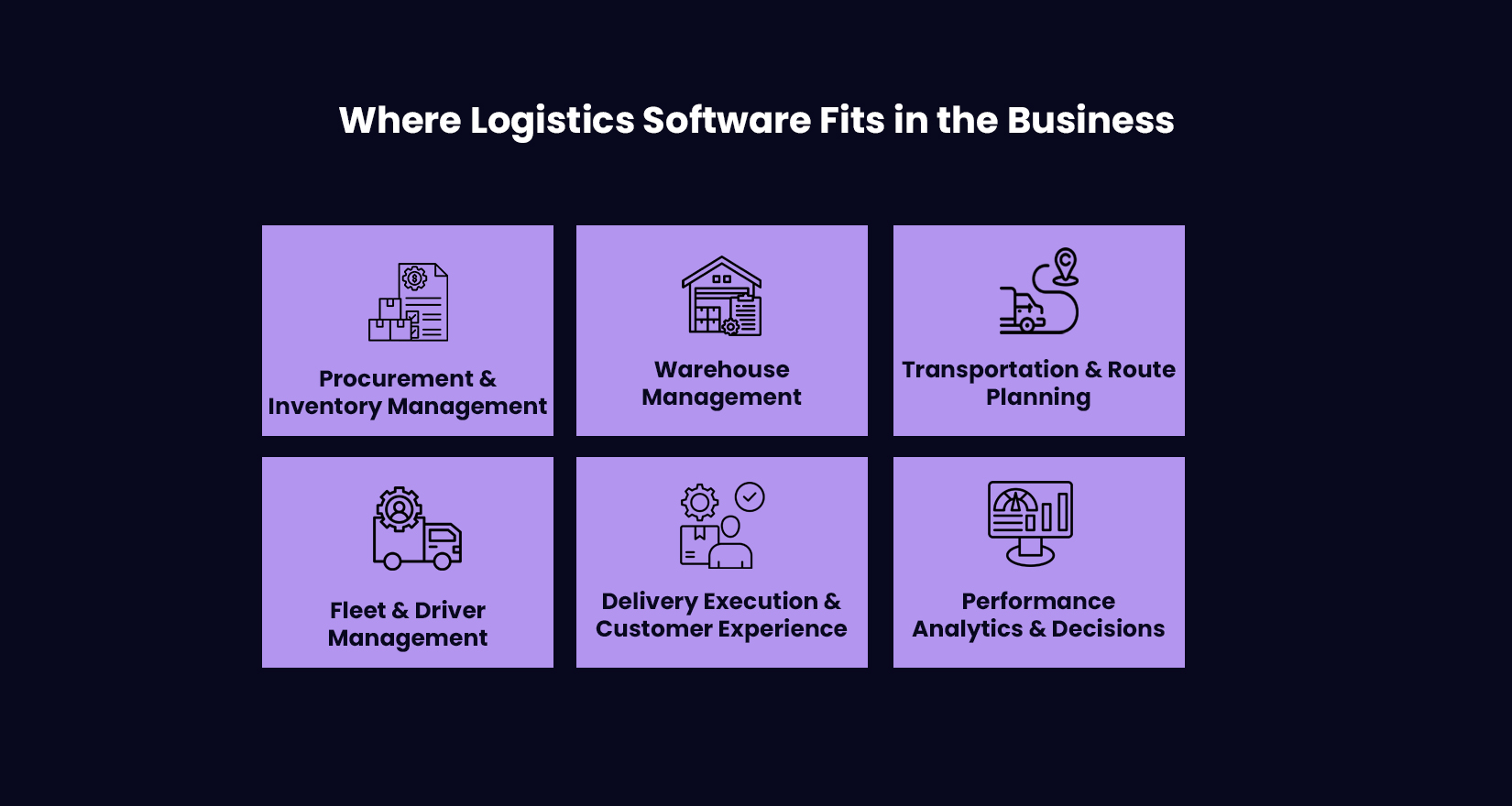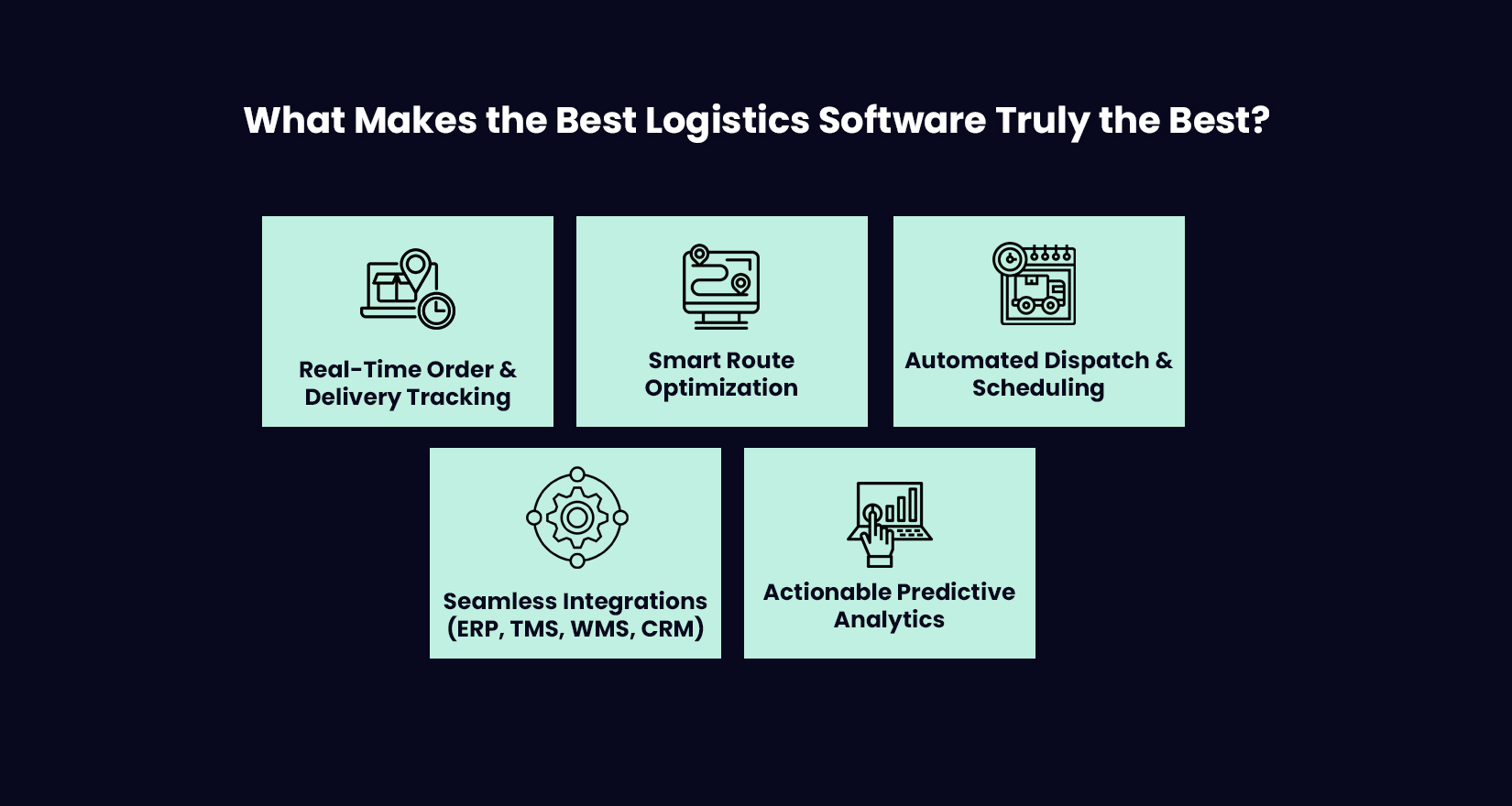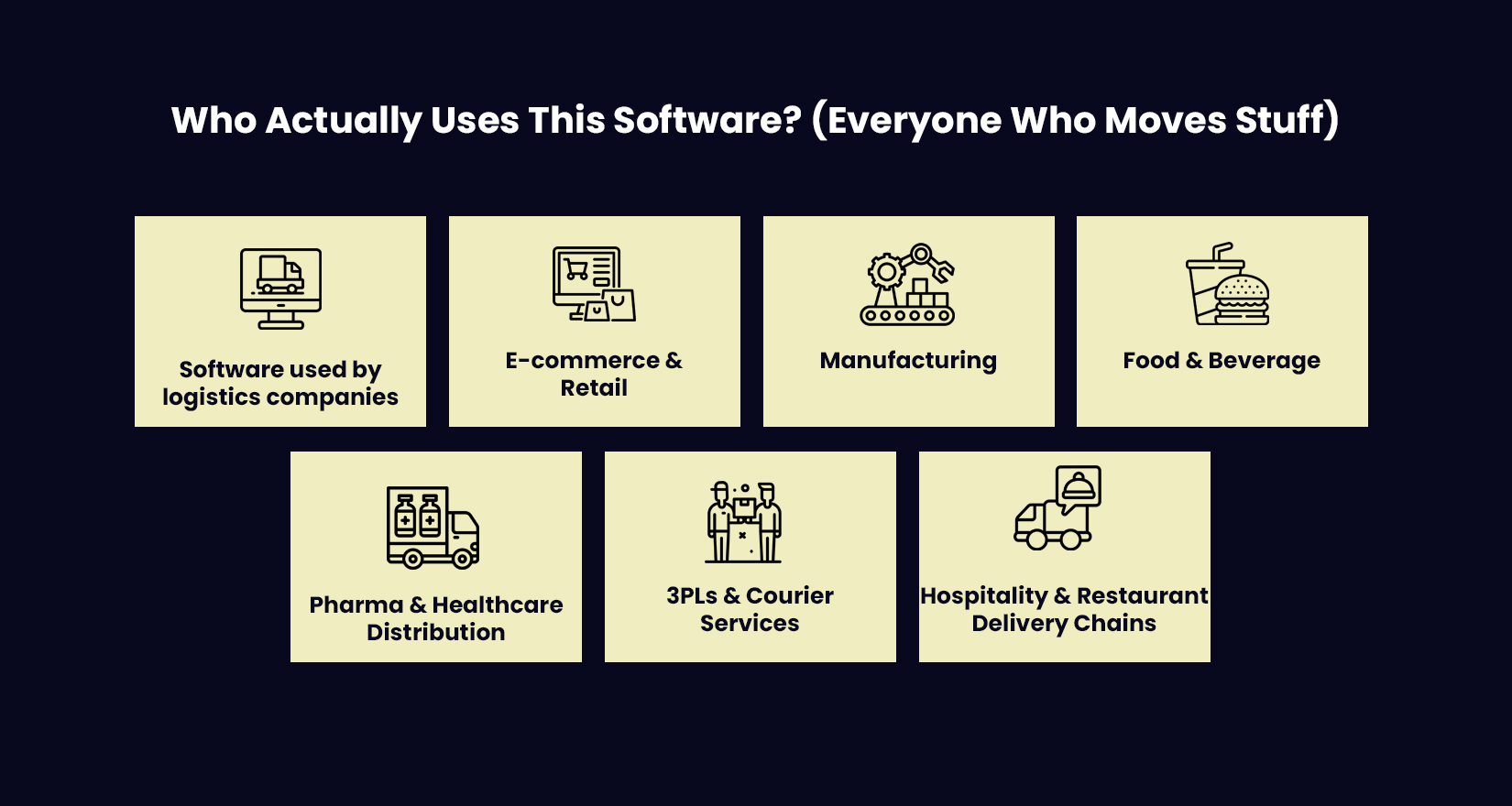
What Is Logistics Software? The Part of Your Business That Does the Adulting
Let’s be honest, logistics is not exciting. Even with logistics software, you are still untangling schedules and spreadsheets. Remedying last-minute breakdowns, patching customer complaints, getting lost in route confusion, and managing the ongoing “where-is-the-truck?” before lunch. You know it’s a lot. But here’s the twist; when your logistics software is functioning as it should, it steps into view as the adult in the room. It provides structure and discipline and actual accountability where there was once chaos.
And yes, we’ll get into the details about what logistics software really is, how it works. No more pulling all-nighters to get deliveries right after holiday creations or busy weekends. No more prehistoric operations that run on personal heroics.
So, What Exactly Is Logistics Software?
Logistics software is the modern infrastructure that allows businesses to plan, execute, and monitor the movement of goods, from sourcing to warehousing to transportation to the last mile. It allows shippers to keep everything organized and visible in the moment, with automation and real-time data.
Think of it as the control center of your transportation, warehousing, fleet, dispatch and delivery operations. Logistics management software replaces manual processes, connects your teams on one platform, and enables full end-to-end visibility into your supply chain.
Why Businesses Can’t Ignore Logistics Software Anymore
Customer expectations have gone completely wild. We’re in a world where instant delivery is the bare minimum, and people want real-time play-by-play updates, down to the driver’s heart rate, route choice, and whether they slowed down to grab a coffee.
– 94% of customers want visibility throughout the entire delivery journey in real time.
– 73% would stop using a brand if they received their package late.
– At the same time, 43% of logistics operations still use the dusty excel-and-paper approach. And will be in 2025.
Translation: companies without software for logistics are showing up to Formula 1 with… a bike.
Where Logistics Software Fits in the Business

Logistics software is located at the operational heart of a company. It does not displace people, it alleviates the weight from them. It ties planning, execution, tracking, and delivery together smoothly instead of hoping each department has their own answer and can fend for themselves.
1. Procurement & Inventory Management:
This is where stock levels, purchasing, and supplier collaboration all meet. Logistics software makes sure that inventory management is not based on worst-case scenario stocking levels or manual inventory counts. It systematically keeps track of what comes in, what goes out, and what needs to be replenished. This means fewer stockouts, fewer emergencies, and better planning for demand.
2. Warehouse Management:
Inside the warehouse, logistics software organizes the chaos-inducing realities of storing, picking, sorting, and loading. Instead of depending on memory and hand written labels, now everything is systematic and traceable. Stock moves through the warehouse quicker and with fewer mistakes, and far better control over space, traffic, and workflow processing.
3. Transportation & Route Planning:
This is where the rubber meets the road. Transportation is painfully expensive, time sensitive, and fluid. Logistics software can automatic allocate loads, determine carriers or vehicles, and plan routes effectively. It adjusts within real world realities, from traffic to weather to delivery windows, and make sure that inventory moves with purpose, rather than unknown improvisation.
4. Fleet & Driver Management:
Vehicles and drivers are the lifeblood of logistics. The software monitors maintenance schedules, driver availability, performance, and compliance. If a vehicle needs a service or a driver approaches maximum hours, operations know before it is an issue. This keeps fleets healthier and time on the road safer.
5. Delivery Execution & Customer Experience:
The final delivery touchpoint is where the customer experience is either made or broken. Logistics software provides customers with live updates, accurate ETAs, and proof of delivery. This eliminates the typical “where is my order” frustration and instead gives customers visibility and assurance.
6. Performance Analytics & Decisions:
Every scan, every route, every handoff, every delivery generates data. Logistics software takes that data and provides insight, showing you where time is lost, where there is money leaking, and where efficiency can get better. Leaders get clarity instead of depending on gut decisions, anecdotes, or old reports.
To summarize: Logistics software brings together all the components of the supply chain into a cohesive system. It aligns teams, reduces waste, speeds up workflows, and ensures that operations run consistently instead of chaotically.
What Makes the Best Logistics Software Truly the Best?

Not all logistics tools are the same. Some tools will bring order to your chaos, while others will simply make your chaos digital. That’s not progress; that’s a complicated version of Excel.
The best logistics software will contain:
1. Real-Time Order & Delivery Tracking:
No more guessing where each shipment is at any given moment and anywhere, whether you are tracking sender locations, drivers, or delivery stages. Knowing builds confidence, reduces follow-up calls, and keeps everyone on the same page.
2. Smart Route Optimization:
Save fuel, cut miles traveled, and deliver faster—without using Google Maps and your sixth sense. Smart routes order your deliveries in a way that is efficient considering real-world conditions.
3. Automated Dispatch & Scheduling:
Let software figure out which loads go with which vehicles based on cargo capacity, priority, and distance, so dispatching stops being a mystery.
4. Seamless Integration (ERP, TMS, WMS, CRM):
Your tech stack should function as a team, rather than a long-distance acquaintance. Integrations should allow for connections which create automatic data flow across operations.
5. Actionable Predictive Insights:
See issues before they become delays. Make decisions based on insight not a gut feeling.
Who Actually Uses This Software? (Everyone Who Moves Stuff)

Software that is utilized by businesses in logistics is no longer just for the biggest corporations. Mid-size and emerging businesses are depending on software applications now more than ever to stay organized and competitive. Beyond product shipments, logistics software is for any business where products are moving. Benefiting industries include:
1. E-Commerce & Retail:
Manages a significant volume of orders, inventory across many locations, and delivers the expectation of quick turnaround to customers. All of this while keeping real-time tracking and consistent customer communication across different platforms.
2. Manufacturing:
Provides a clear plan to procure raw materials, establish production timelines, schedule supplier deliveries, and manage outbound shipments. So that things stay on track, and that nothing is ever slowed down or moved out of position.
3. Food & Beverage:
Ensures freshness, control of temperature, right timing for delivery of orders, compliance, and timely feature of inventory. Moving across multiple locations so that quality and safety are maintained for our customers.
4. Pharma & Healthcare Distribution:
Demonstrates compliance, product traceability, safe handling, temperature-controlled logistics, and verification of chain of custody from the warehouse to our final destinations, and that nothing is ever compromised in that process.
5. 3PLs & Courier Services:
Helps transportation suppliers to manage the complexity of shipments. That are multi-client along with route planning, fleet utilization, load-balance shipments, and delivery windows. While optimizing fuel costs and improving driver productivity.
6. Hospitality & Restaurant Delivery Chains:
Aids in producing a clear path for food and beverage to quickly turnaround orders, accurately dispatch, real-time tracking, and consistency to keep food quality in their customers’ hands and pleased to generate loyalty.
Conclusion
Logistics software is no longer an optional utility. It has entered the realm of business infrastructure that is not optional, as payment systems, sales forces, and doping is to sports. If your logistics execution is driven by memory, manual updates, or a great deal of specifying fires on a daily basis, your organization is beholden to the scale and pace of today’s market conditions.
If your logistics executions are still driven by spreadsheets and reactive planning, cost is quickly becoming part of your operating brand, and your customers realize that. It’s time to upgrade your operations. Book a demo with LogiNext today and see how easy logistics can be.
32







@LogiNext